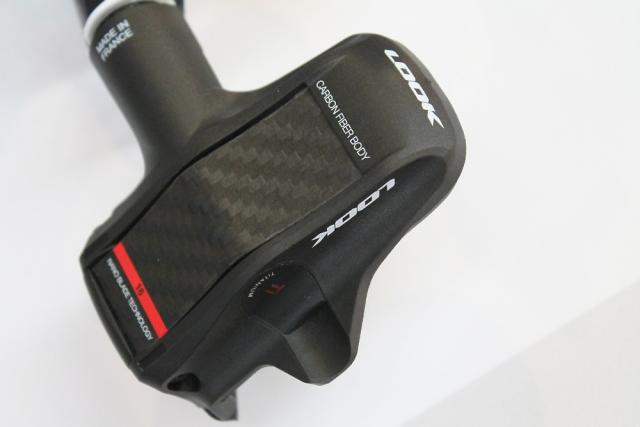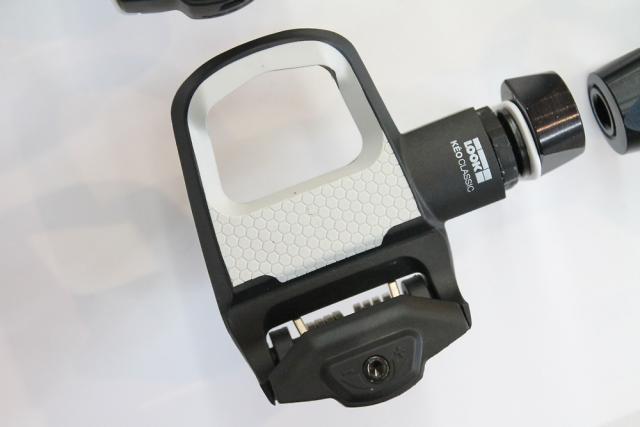- News
- Reviews
- Bikes
- Accessories
- Accessories - misc
- Computer mounts
- Bags
- Bar ends
- Bike bags & cases
- Bottle cages
- Bottles
- Cameras
- Car racks
- Child seats
- Computers
- Glasses
- GPS units
- Helmets
- Lights - front
- Lights - rear
- Lights - sets
- Locks
- Mirrors
- Mudguards
- Racks
- Pumps & CO2 inflators
- Puncture kits
- Reflectives
- Smart watches
- Stands and racks
- Trailers
- Clothing
- Components
- Bar tape & grips
- Bottom brackets
- Brake & gear cables
- Brake & STI levers
- Brake pads & spares
- Brakes
- Cassettes & freewheels
- Chains
- Chainsets & chainrings
- Derailleurs - front
- Derailleurs - rear
- Forks
- Gear levers & shifters
- Groupsets
- Handlebars & extensions
- Headsets
- Hubs
- Inner tubes
- Pedals
- Quick releases & skewers
- Saddles
- Seatposts
- Stems
- Wheels
- Tyres
- Health, fitness and nutrition
- Tools and workshop
- Miscellaneous
- Cross country mountain bikes
- Tubeless valves
- Buyers Guides
- Features
- Forum
- Recommends
- Podcast
TECH NEWS
Look launch Kéo Blade 2 pedals + video
Look have launched a new version of their Kéo Blade pedal that’s lighter than before, with a lower stack height and a larger cleat contact area. Look also say that the Kéo Blade 2 has better aerodynamics.
The defining characteristic of the Kéo Blade design is the use of a carbon blade rather than a metal spring in the cleat retention mechanism. With the new design, the carbon blade is much wider than before, and it runs down the centre of the pedal rather than being positioned on the outer edge. And whereas the blade was straight when at rest in the original design, it now bends at the centre.

We can’t say that we’ve heard of any problems with the previous design, but the new version does look neater – a bit like the existing Kéo Blade Aéro pedal.
Previously, you could choose between pedals with two different carbon blades depending on the force you wanted – 12Nm (the yellow one) and 16Nm (the red one). Now there are three, with the addition of a 20Nm (blue) option. All of the pro riders went for the 16Nm version before.

The pedal platform is 64mm wide (it was 62mm before, according to our vernier calipers) and the cleat contact surface area is 700mm2. It was 402mm2 previously, an increase of 74%. We’ve not used these pedals yet but that should provide plenty of stability. With a new lighter and finer axle, Look have reduced the stack height a touch too, down from 15.7mm to 13mm.
The Kéo Blade 2 will be available with either a titanium or a cromo steel axle. Look claim that the titanium version weighs in at 90g per pedal (124g including the cleat) whereas the cromo version is 110g per pedal (144g including the cleat). There are lighter pedals out there, but these weights put the Kéo Blades among the lightest on the market.
Look’s UK distributor, Fisher Outdoor Leisure, are expecting a first delivery in November. The price will be £139.99 for the cromo version and £224.99 for the titanium version.

Look are also releasing an updated Classic pedal, the Classic 2. It has a new bi-injected composite body and a new dimpled surface across the axle section of the pedal. Each pedal weighs 139g and you can adjust the release force from 8Nm to 12Nm, depending on your preference.
Mat has been in cycling media since 1996, on titles including BikeRadar, Total Bike, Total Mountain Bike, What Mountain Bike and Mountain Biking UK, and he has been editor of 220 Triathlon and Cycling Plus. Mat has been road.cc technical editor for over a decade, testing bikes, fettling the latest kit, and trying out the most up-to-the-minute clothing. He has won his category in Ironman UK 70.3 and finished on the podium in both marathons he has run. Mat is a Cambridge graduate who did a post-grad in magazine journalism, and he is a winner of the Cycling Media Award for Specialist Online Writer. Now over 50, he's riding road and gravel bikes most days for fun and fitness rather than training for competitions.
Latest Comments
- whosatthewheel 3 hours 59 min ago
I find it fascinating how careless driving is not considered dangerous by the law.
- lawrence18uk 4 hours 6 min ago
" in what appears to be two random, completely unprovoked attacks."...
- hawkinspeter 4 hours 57 min ago
You could get away with much less turning area required if you go for a Kakeya set...
- Gbjbanjs 5 hours 9 min ago
Insured yes, through BC, no.
- Gbjbanjs 5 hours 16 min ago
Any chance we could have bike reviews for people with normal disposable incomes? My ti bike cost £2k, brilliant, versatile.....
- chrisonabike 5 hours 34 min ago
- matthewn5 6 hours 16 min ago
I built a gravel bike last summer - a Ridley Kanzo Fast with Campag Ekar - and have used it through the winter with mudguards for club runs and the...
- David9694 9 hours 50 min ago
Another Conservative bemused at how but a Conservative policy is turning out
- Global Nomad 15 hours 19 min ago
would be good to see you test the Newmen wheels the weight/price ratio is extremely good and suggests that europeans can match the chinese in this...





Add new comment
6 comments
though I cannot agree with the above comment on Raleigh pedals, I have to say that bearing quality is a problem with Look.
I have seen many pairs which have developed play between axle and body. Never any seized but some of them develop play within a couple of months.
I am currently running 2 sets of blades and one has play already.
I have switched to using Raliegh RSP pedals which Look keo compatible. Very cheap with option of die cast body or injected mould glass reinforced plastic as Keo but have far better bearing life. Die cast can be bought from £25 ish on E bay with cleats and my last pair of high spec resin ones were £35.00. I will never buy Look again as the bearing quality is rubbish.
Having spent a week on Looks, I much, much prefer my Speedplay pedals. Everything is so much better, the weight, the amount of float, the fact you just stomp down and click.
That you cant service the bearings annoys me with Look now. I swapped my old 10 year old Deltas to keos, they have all seized within a year and are nowhere near as smooth as my ancient ones.
Nice. I've got the current Kéo blades and whilst I haven't had any issues with them I've heard of quite a few cases of the blade springs delaminating or snapping. With my engineering hat on I'd imagine the failures start if the edges of the spring get damaged, so I've been very careful with mine and check them regularly. This new design looks like it should get rid of the change of that happening, so a good move by Look. These will go on my list if mine ever give up the ghost.